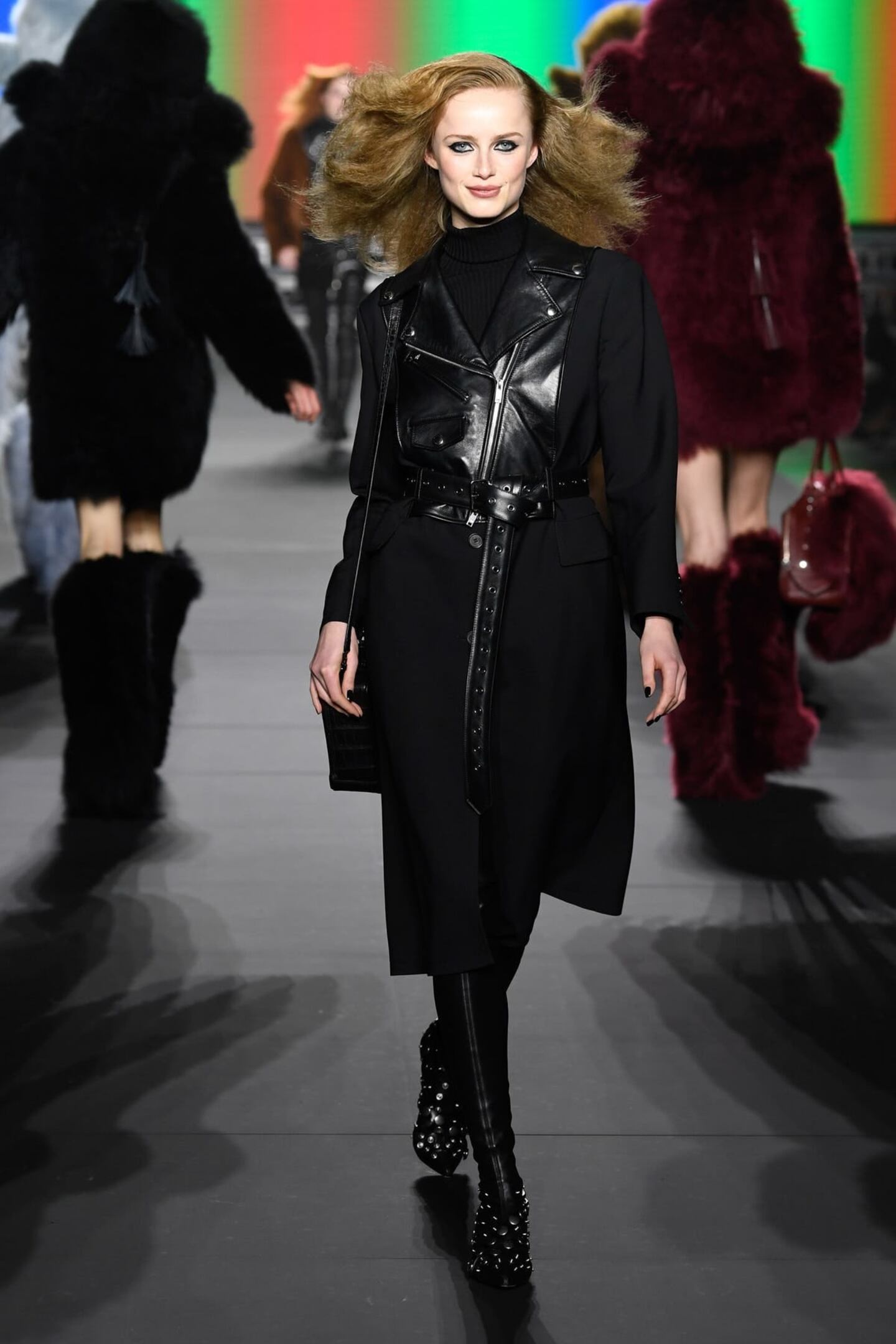
The Business of Fashion
Agenda-setting intelligence, analysis and advice for the global fashion community.

Agenda-setting intelligence, analysis and advice for the global fashion community.

PARIS, France — Anniversaries should be upbeat, and the bittersweet thought that Sonia Rykiel's label turned fifty last night without her earthly presence didn't dampen the festive energy at Julie de Libran's catwalk show-cum-concert one bit. Sending models out grinning in packs of four, de Libran delivered Rykiel's greatest hits with a punk twist, before — BOOM! — a shower of metallic streamers and 1980s girl group Bananarama hit the stage to belt out a trio of their greatest hits too.
Since its beginnings in 1968, Sonia's brand has always channelled the free-wheeling, Rive Gauche girl's inner child, yet it was nice to see de Libran's take on the 'Paris in protest' theme take the backseat to a diverse overview of the archives (especially seeing Maria Grazia Chiuri explored that same historical year days prior at Dior). And rather than direct reproductions, de Libran updated pieces like lingerie dresses, capes and pantsuits with horizontal zips to create floaty volumes, or gave the ubiquitous striped knitwear a grunge feel via loopy, spiderweb yarns. Elsewhere lashings of sequins, stretch velvet and faux fur perpetuated the 'party girl' mood that, like its namesake, this show will long be remembered for.
From where aspirational customers are spending to Kering’s challenges and Richemont’s fashion revival, BoF’s editor-in-chief shares key takeaways from conversations with industry insiders in London, Milan and Paris.
BoF editor-at-large Tim Blanks and Imran Amed, BoF founder and editor-in-chief, look back at the key moments of fashion month, from Seán McGirr’s debut at Alexander McQueen to Chemena Kamali’s first collection for Chloé.
Anthony Vaccarello staged a surprise show to launch a collection of gorgeously languid men’s tailoring, writes Tim Blanks.
BoF’s editors pick the best shows of the Autumn/Winter 2024 season.